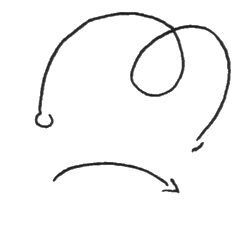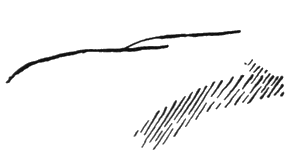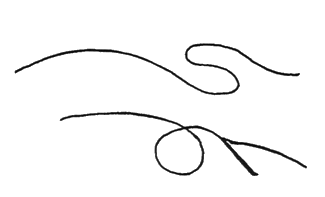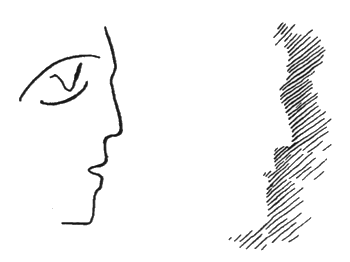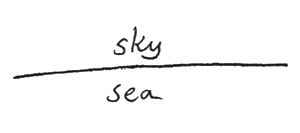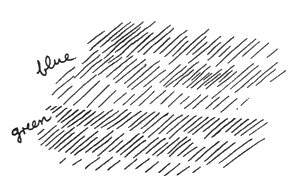Eurythmy as Visible Singing
GA 278
VI. The Sustained Note; the Rest; Discords
25 February 1924
If, in the forthcoming lectures, we are to become acquainted with a few things in further detail, today we have to put the question: If music essentially is the flow of Melos, and if it is Melos in particular which should be expressed in the gestures of eurythmy, what then is the musical element as such, the music shown in eurythmy, meant to express?
Here we meet with two extremes. On the one hand it may be said that the melodic element is tending more and more towards what is thematic, towards the expression of something which is not in itself musical. I have often mentioned that, especially in recent times through a Wagnerian influence, as well as other influences, music on the one hand has become expression, expression of something that is not music. On the other hand, especially in the beginning of the age of Wagner, we also find pure, absolute music (the musical element as such, simply the weaving of musical sounds)—of which it was said (not without a certain justification) that it made music into a tonal arabesque, a progression of notes without content.
Naturally these are both extreme cases. To put forward the idea that music embodies nothing and is merely a tonal arabesque [37] is nonsense, utter nonsense. But such nonsense may very easily arise when there is no real understanding of where the essential musical element lies. It cannot lie in the notes themselves, as I have repeatedly emphasized. The person engaged in tone eurythmy has constantly to bear in mind the necessity for expressing in the movements, in the actual gestures themselves, that which lies between the notes, regarding the notes as merely giving him the occasion for the movement.
It may help you to carry out these gestures I have already indicated, with inner correctness, and the right inner feeling, if we make a certain basic provision. And the provision should consist that you, as eurythmists, regard the actual note, and in a certain sense the chord too, as that which pushes you into movement, causes you to move, and gives the impetus (Ruck: ‘jolt’) towards movement. You must continue the impetus between two notes and again regard the next note as the impetus which is given to you. In this way the movement will not express the note, and will not emphasize the note, but will express in the fullest possible way everything that lies between the notes and what comes to the fore, for instance, in the intervals. This is of great importance.
Now, why is there such a strong urge in our modern age to deviate from the purely musical realm? Something quite beautiful may sometimes result from this deviation from what is purely musical, but why is the urge to deviate from it so strong? It is because the contemporary person has gradually acquired an attitude of mind in which he is no longer able to dream, no longer able to meditate. He has nothing within to set him into movement, and wants to be set into movement from outside. But this being-set-into-movement from outside can never produce a musical mood. In order that modern civilization could furnish proof of its unmusical nature, it has laid hold of a drastic means to do so. It is really as though, in its concealed depths of soul, modern civilization wanted to provide the clearest proof that it is unmusical. And the proof is given in that it has produced the film. The film is the clearest proof that those who like it are unmusical. For the whole basis of films is that they only permit those things to be active in the soul which do not arise out of the inner life of the soul, but which are stimulated from outside [See Appendix 6].
It must be admitted that a lot of modern music-making [1924] tends to lay special stress upon that which is stimulated from outside. Attempts are made to imitate what is external—not by means of the pure melodic element, but rather by employing some subject matter as far remote from the melodic element as possible.
There is a very simple way, once more a kind of meditation (I recently spoke to you about the TAO meditation, which may be helpful to eurythmists in the way I have already explained), whereby you may gradually accustom yourself to seek for that which is musical even in what lies outside the musical sphere. It consists in comparing a sequence of vowels, such as: Lieb ist viel or Eden geht grell. There need be no meaning. Compare these for instance with: Gab man Manna or Ob Olaf warm war.
And now repeat such sentences one after the other:
Lieb ist viel ... Eden geht grell ... : does not resonate
Gab man Manna ... Ob Olaf warm war ... : musical
You will most certainly feel that the second examples are musical, whereas the first exist as if they would not resound. Just try to repeat these sentences one after the other: Lieb ist viel. Gab man Manna. Eden geht grell. Ob Olaf warm war. You will easily recognize that the vowels ah[1] and o lie within the musical sphere, whereas the vowels ee and a depart from it. This is an important matter for eurythmists to observe, for eurythmy must, of course, represent a wholeness. When in tone eurythmy you wish to express something very inward, the movements may be led over into ah or o, or likewise into oo. But the gestures of tone eurythmy may not readily be led over into e or a. Thus the sounds ah, o, oo may be employed in pieces of music for eurythmy in order to emphasize the mood, but a and ee should only be used when it is definitely intended to pass, at some point or other, out of the musical realm. This is important.
These things are of such a nature that we have to acquire a consciousness of them above all. It is interesting, for example, when we follow the German language through several centuries, to observe that it has gradually dropped many ah, o, and oo sounds, and has taken on many ee and a sounds. In other words, the German language has become progressively more unmusical in the course of centuries. (I am speaking now of the vowels, not of the intervals.)
It is really important to bear this in mind in tone eurythmy, and indeed in other eurythmy too. For the knowledge that the German language has a marked tendency towards a distorted phonetic imagination may be quite valuable. With the western Germanic languages this is even more the case. But all this rightly leads us to put the question: ‘What does music really express?’ This question cannot easily be answered by anyone who is unable to dream. For, you see, in very truth the poet, the artist, must basically be able to dream, to dream consciously—that is to say, to meditate. Either he must hold dream- pictures in recollection, or be able to find dream-pictures of the realities of the spiritual world.
But what does this mean? It means leaving behind everything that makes sense in the sensory world. Take a dream (I have often spoken of these matters). Take a dream: if we are to get at its nature, we must not look at it as an interpreter of dreams does. For the interpreter of dreams takes the dream's content. Anyone who really understands the nature of dreams does not take the dream's content, but considers whether the dream rises up in fear and calms down, whether the dream stirs up an inner uneasiness which is intensified to anxiety, ending perhaps in this anxiety, or whether there is a state of tension which is afterwards resolved. This is really the decisive thing in a dream. And in the description of spiritual processes this becomes even more necessary.
It is, of course, exceedingly difficult today to speak to humanity about the things which spiritual science has to impart. For instance, when I described the progression of world-evolution (Saturn, Sun, Moon and so on), people thought the very things important that were unimportant to me. It is certainly correct that the processes on Saturn were as I described them. But that is not the essential point. The essential point is the inner movement which is described. And I have always been most delighted when somebody said that he would like to compose in music what has been described in the evolution of Saturn, Sun and Moon. Of course, he would have to leave out some of it, leave out the colour element, as I described, the warmth phenomena, even the smells on Saturn (for apart from the ‘smelling-harmonium’ [38] we have no musical instrument functioning to smells, do we!). Even so, particularly Saturn evolution is such that its essence could be expressed quite well in music and could be composed. [39]
When anyone dreams, and (setting aside its content) takes the tension and relaxation, the culmination of the picture sequence, or the culmination of bliss when flying, and so on; if he takes all this movement and says: ‘I am quite indifferent to the meaning of the dream; for me it all depends on how its movements take place’—then the dream already is a piece of music, then you cannot write it down except in musical notation. Once you feel that the dream can only be written down in musical notation, then you are just beginning to understand the dream, I mean really to understand it by looking at it directly.
From this you will see that the musical element has content: not the thematic content, which is taken from the sensory world, but a content which appears everywhere when something is expressed in terms of the senses, but in such a manner that everything sensory can be left aside, revealing the essence of the matter. You have to treat the musical element precisely in this way. And the eurythmist has above all things to bear this strongly in mind. And he will bear it strongly in mind when he pays more attention than is usual in listening, when he pays attention to the sustained notes and the rests.
For the eurythmist, the sustained note (the pedal-point) and the rest are of special importance. And it is a serious question whether a pedal- point or anything that recalls in some way the sustained note (this really is of great importance) is being adequately treated. It will be adequately treated if, every time he or she comes to a held note, or to something which either is a pedal-point in germ, or might become such, the eurythmist carries out the eurythmy in the greatest possible calmness, emphasizing standing calmly, in other words not proceeding further in space as long as the sustained note is heard.
On the other hand, it is important for the eurythmist to penetrate inwardly into the musical significance of everything connected to the rest. And so it will be good to take an example. Here (see musical example) you have the opportunity of moving up after the descending mood, with a corresponding rest which even contains a bar line, something which may seem a contradiction, from the point of view of the eurythmist.

(Fig. 11 From Mozart's Piano Sonata in F major (K.332), III, bars
58–61)
I mention this because after what I just said it must appear contradictory to the eurythmist. I previously said that the bar line signifies a holding-on, doing the movement in yourself; that the transition from one motif to another signifies moving in space, if possible with a swinging movement—naturally suited to the notes in question. As a eurythmist you may say: ‘Now here I really do not know what to do. I am supposed to move forwards and yet at the same time remain standing.’ That is in fact just what you should do! You should move forwards two steps and remain standing between them. You should accomplish this when you want to express anything similar to this example, taken from Mozart's Piano Sonata in F major, where you can have a longer rest during which the bar line occurs—then you should move with a swing from one note to the other, but calmly stand still in yourself in the middle of this swinging movement, in the rest. Here you will see how you radically indicate, precisely through eurythmy, that the musical element lies between the notes, for in such a case it is the rest which you specially emphasize through eurythmy. It is this that is so very important.
And now consider I said on the one hand that when a note is sustained, you should try as far as possible to stand still, remaining within yourself. Now, the pedal-point, the sustained note, frequently lies in a second voice and of course it may be aesthetically expressed when the two parts are taken (as they always have to be) by two people, each moving a different form. In this way a very beautiful interplay (Variation) may result between the two people. When the one proceeds in the movement, the other remains standing with the sustained note. The movements are carried out so that the person remaining standing moves a shorter curve, during which time the person moving onwards in the form makes a fuller curve—and they re-encounter each other. In this way the whole thing is brought into a satisfactory movement, which on the one hand may be shown between the swinging over, between the interval (which may go as far as the rest), and on the other hand in the pedal-point or the sustained note in general.
It is in this way that the actual quality of tone eurythmy has gradually to develop. Only when you feel things in this way will you be able to bring out the actual quality of tone eurythmy.
This shows you at the same time that music of several parts will essentially be expressed by a number of people moving a number of forms. The forms must be carried out in such a way that they really correspond to each other, just as the different voices correspond in the music itself.
When you further develop the feeling of which I have spoken (the realization that the musical element lies in the tension, relaxation, in the rising and falling of the movement), you will indeed have something which the music expresses. For music does not express that which creates the meaning of words, but it expresses the spiritual element itself living in the movement of musical sound. It is consequently specially important for eurythmists to pay great heed to what the movement expresses quite inwardly in the greatest sense, that is discord and concord. Now, you know, a composer will never make use of a discord unintentionally, and indeed music without discords is not really music, because it is without inner movement. Composers and musicians in general make use of discords. Concords are actually there in order to calm the discords, to bring the discord to some sort of completion.
In the experience of discords and concords something makes its appearance which approaches the mysteries of the world closer than we can put into words. Let us suppose that we hear a discordant phrase which resolves into a concord. Let us observe what the eurythmist does. He or she of course can bear in mind all that I have indicated, and shall possibly still indicate, with regard to forms. He or she will go on to a concord and may use as form the various intervals that I have indicated. But the transition from a discord to a concord, or vice versa, should be brought out in the presentation. It should be that the eurythmist, while moving on in a discord, at the moment of going over from a discord to a concord, must insert an abrupt movement (Ruck) into the movement itself.
Something very significant is expressed in this way. By this means we express the fact that here, with the transition from discord to concord, or vice versa, something is brought about which the human being places outside of himself. What I have drawn above could also be drawn like this:
Observe how I erase a small part. That is where you go back. You will feel that a small part has been erased. It is a passing over into the spiritual. When you erase a piece of your path you annul all musical sound [that is present] in the movement, and you indicate: ‘Something is present that is no longer possible to express in the sensory realm. Here I [the eurythmist] can only suggest the bounds to you [the onlooker]; your imagination must take you further.’
You see, it is only when we come so far in doing such things that we reach the point where the arts should be. Philistines may think, when they see something of this kind (see Fig. 15, drawing on the left), that it is a face. It is not a face; it is a line. A face is as follows: I must manage in such a way that no actual line is drawn, but a line, as it is, is allowed to arise out of the light and shade (see drawing on the right). Anyone who draws these lines, from the very moment he begins to draw, is no painter, indeed no artist at all. Only someone who allows the lines to arise either out of the colour, or out of the chiaroscuro [light and shade], is an artist.
You can draw in a philistine fashion, like this:
This represents the boundary between sea and sky. But in reality it does not exist! It is absolutely non-existent. The sky exists: blue. The sea exists: green. The boundary between them both comes about because they touch each other (see Fig. 17).
If you want to paint a house, surrounded as it is by air, leave room for your colours within the area which the air leaves free. The house will come about. That's what art has to work for! In this matter one can indeed sometimes reach a fine state of despair. [40]
You see, such despair is very difficult for someone of today to understand. Now, many and various are the types of people who apply for teaching posts at the Waldorf School [Stuttgart], amongst them, teachers of drawing. They have certainly learned something (namely drawing) that is quite useless at the Waldorf School. They say: ‘I can draw.’ Indeed there is no such thing as drawing! It is damaging when children are taught to draw, for there really is no such thing as drawing.
When you reach the point of understanding this erasing of your line in eurythmy, you will also have reached the point when this understanding of the musical element in doing eurythmy really leads into the artistic realm. Thus whenever transitions occur, try (once again without being pedantic) to develop a movement which goes back over itself so that the onlooker is obliged to go back, so that he says to himself: ‘He or she was already further and is now going back.’ He will notice all this unconsciously, but he will at that moment be urged out of the sensory realm, to enter into the spiritual realm where everything to do with the senses is erased.
In this way you will discover the possibility of looking for the essential nature of eurythmic movement in the rest, (Pause: ‘rest’, ‘pause’), even bringing more and more into the rest. Let us once more consider our example (see Fig. 11). Here you have a transition which, in its note values, already presents a marked feeling of going-out-of-yourself, of going with your inner being out of your skin. With the interval of the fifth there is still the feeling of being just at the boundary of the skin.
The fifth is the human being. Going further, we actually pass over into what lies beyond the human realm, but in this case, because we are dealing with music, into the spiritual realm. If you achieve this emphasis of the rest by means of specially pronounced movement, and yet introduce into this movement a momentary calmness (as I have indicated), you will express the whole meaning of this ascending passage in a really satisfactory eurythmical way.
When you are practising, try to find examples of musical phrases containing long rests and very pronounced leaps in pitch, and then try to make the movement as characteristic as possible. This will result in a eurythmy perfectly adapted to the expression of instrumental music; I might say, a singing eurythmy. This will also affect your eurythmy as a whole. For by this means you will feel the very marked contrast which lies between the vowels and the consonants for eurythmic expression. Even if it is true that ee and a actually tend towards a distortion of phonetic imagination, they are nevertheless vowels, and remain within the sphere of music, whereas the consonants are merely noises and lead away from the musical realm.
I have also said that the consonants are really the apology for using the vowel sounds for something in the outer world. This will closely concern you, for in speech eurythmy it will cause you to introduce as much of the vowel element as possible into the consonants. This means, in other words, that you should try in eurythmy to make the consonants as short and the vowels as long as possible.
Now this is not what I wanted to impress on you (for this will arise from your feelings) that there must be a certain parallel between declamation and recitation, and eurythmy. What I do want you especially to take to heart is that for speech eurythmy, too, it is most important to bear in mind that it is also the task of the speaker not only to say something when he speaks, but at times to say something even more essential when he doesn't speak. I do not mean by this those dashes of which recent poets are so enamoured, presumably because they have so much spiritual matter to communicate that they are compelled to express it in continual dashes! I expect you are acquainted with an ironical poem by Morgenstern, consisting only of dashes. [41] It does not contain a single sound, not a single word—simply dashes. I do not mean these dashes, then, but rather the fact that, in order to bring out certain effects in a poem, it is absolutely necessary, just as necessary in declamation as in eurythmy, to understand how to make proper pauses.
Think of the hexameter, with its caesura, where a pause has to be made, and you will realize that something is actually said by means of the pause. Sometimes the pauses need only be short, but it is important that they should also be given their place in declamation and recitation. Imagine the phrase: Was hör ich draussen vor dem Tor was auf der Brücke schallen? recited without any pause—appalling!
Was hör' ich draussen vor dem Tor—
Was auf der Brücke schallen?
is correct. Now as eurythmists, when you are concerned with the expression of a rest, and in speech eurythmy too, the effect will be eminently correct and aesthetically good as well as intrinsically justified, if you cultivate the goingback-into-yourself (going back in the form) which you have been able to learn from tone eurythmy. So that at times even in the short pauses of speech eurythmy, this retracing, this erasing the form, should by all means be seen.
In conclusion I only want to add something which will serve to complete what was left out in the preceding lectures. It is this: You know that the keynote is best expressed by the position, or also by means of the step: position, step (as I explained in connection with the triad). Now imagine that you have to form the interval of the second. The second in music is something which actually does not quite express the musical element, but in which the musical element makes a beginning. It stands at the gateway of the musical realm. The second is a musical question. Thus it is necessary (and you will feel the necessity) when forming a second, which follows any keynote, that you as second (whilst the second follows from another note) strive to turn the palms of the hands upwards. Any sort of movement you like can be produced while trying to arrive with the palms of the hands turned upwards, when ascending from one note to the next, or just a movement upwards, straightening the palm of the hand. Of course you must see to it that the hand does not appear in this position beforehand. The important thing is always to acquire a view of the whole. Through this, it [the second] manifests itself
Now, on the basis of what I have said, we have still to arrange the next two sessions.
Notes:
1. Phonetic spelling, see p. xiv. (Translator's note.)


